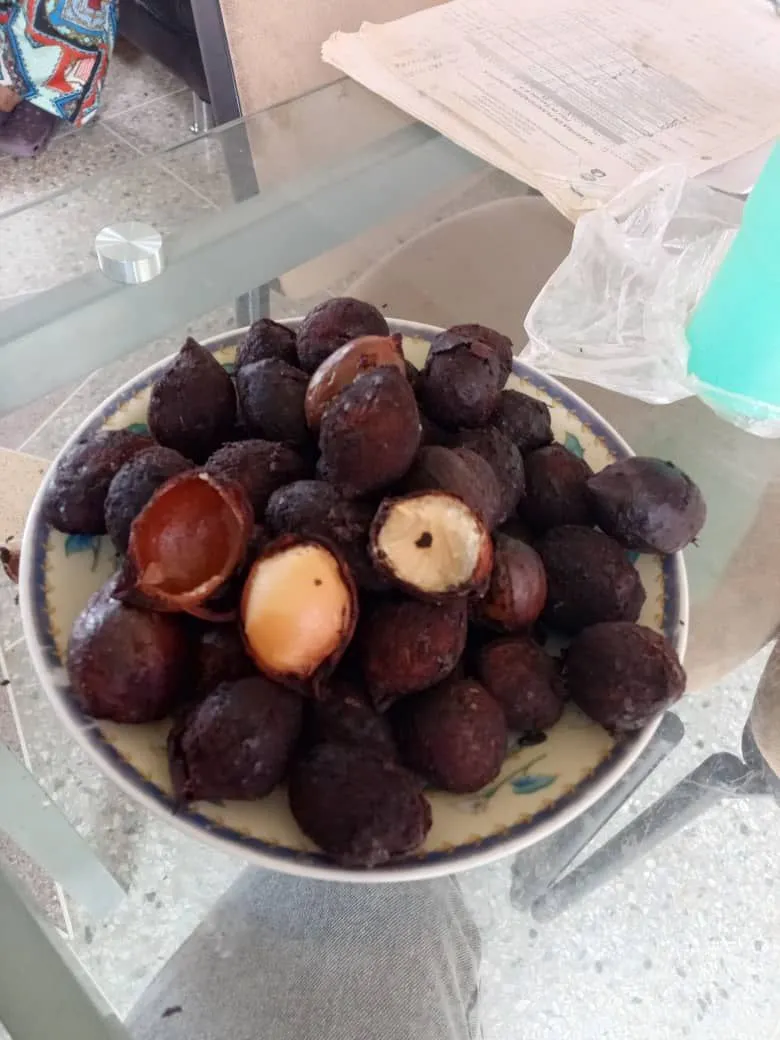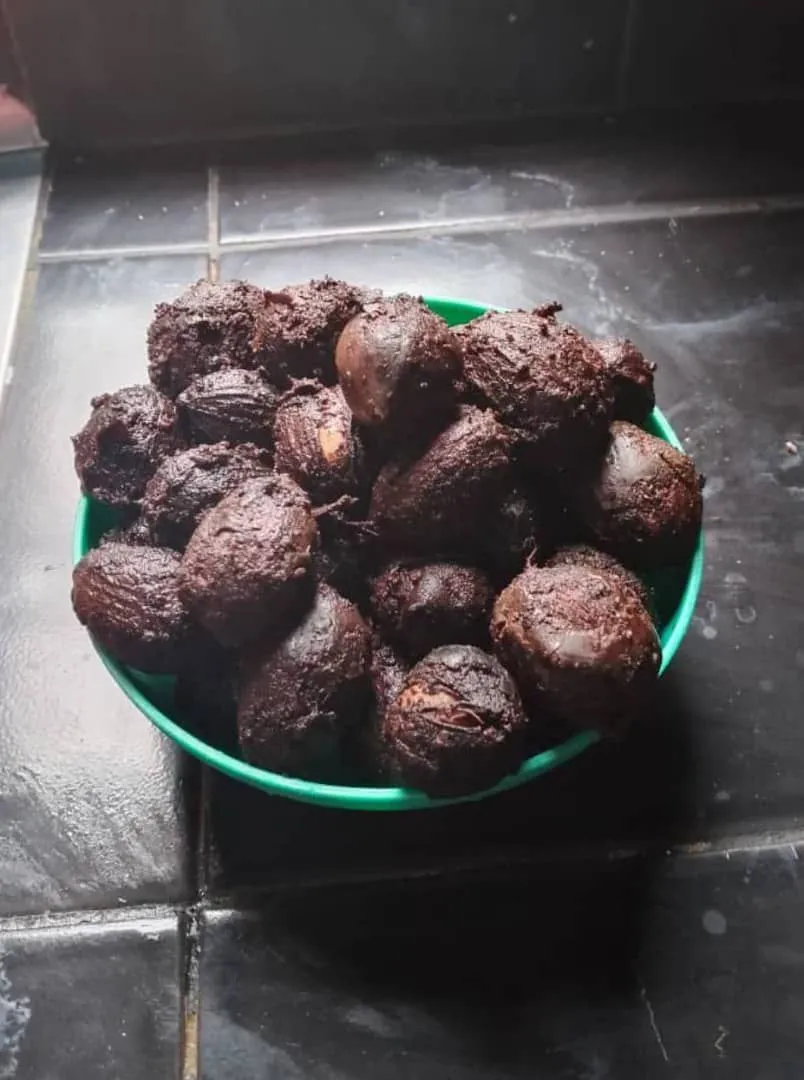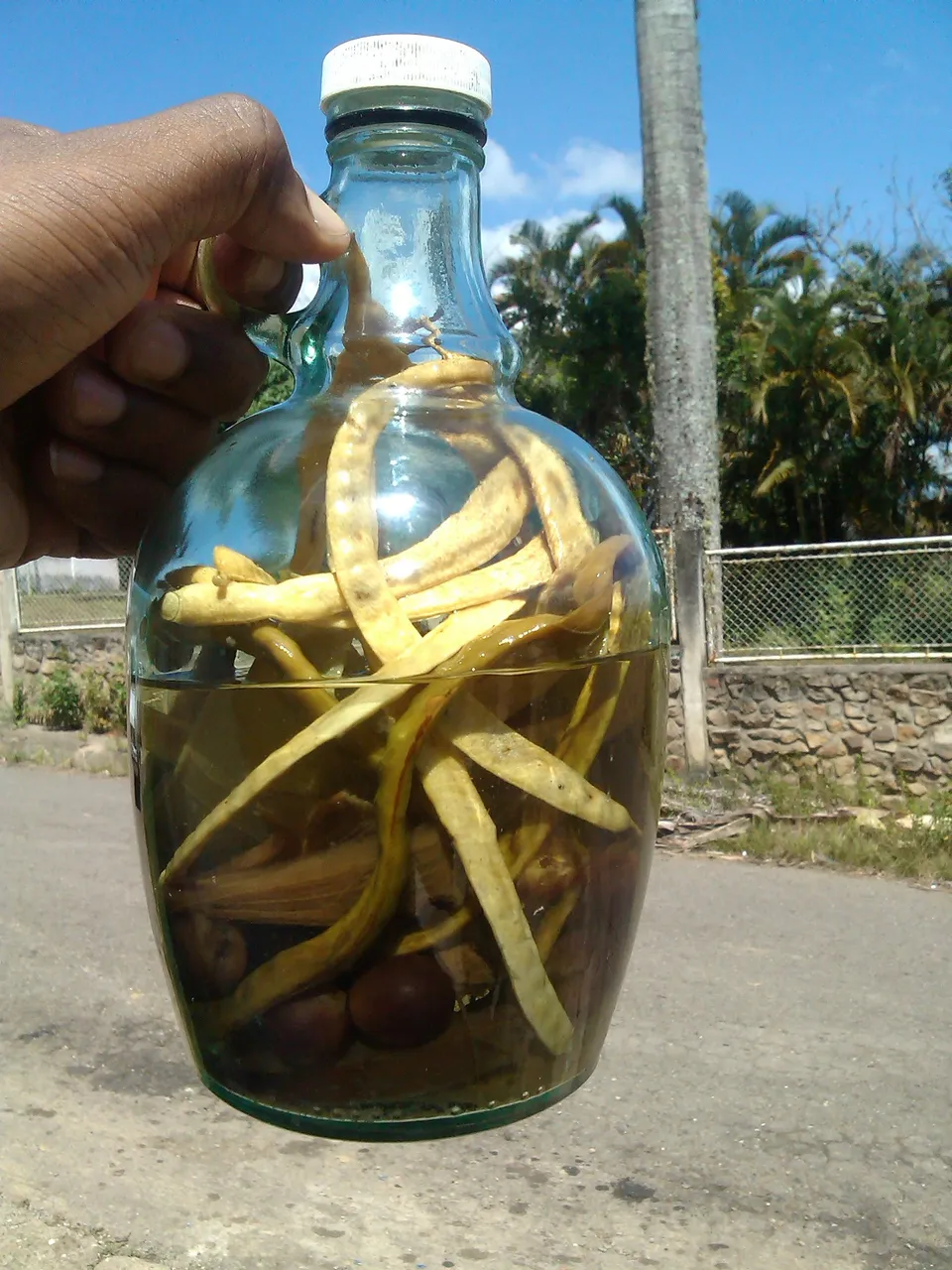



Its exterior shape resembles that of an almendrón, but when cooked, the Urupaguas turn dark on the outside and whitish on the inside. Although its appearance may remind one of marzipan, its flavor is quite unique. Traditionally, adults pair it with a good sip of macerated cocuy, as seen in the photo.
I take great pride in knowing that—so far—this fruit is considered unique to the state of Falcón and Venezuela. Its entire process of growth, harvesting, and preparation is wrapped in both reality and magic; some of which are documented on various websites. Additionally, it is considered medicinal for combating gastrointestinal issues, among other benefits.
Furthermore, the Urupagua has inspired various artists who have written songs and novels that I have had the pleasure of reading and listening to as part of falconian culture. On this occasion, I want to emphasize the value or connection that the tradition of eating Urupaguas has in our falconian identity.
I remember having the privilege of discovering and tasting Urupaguas thanks to my maternal grandfather. Since I was a child, every time he bought Urupaguas, he would share them with me, which made me very happy, as it was one of the few moments I got to spend with him.
To be honest: it is a very bitter fruit. The first one I tried tasted bitter; the second one did too. The third was somewhat better, but by the fourth or fifth Urupagua, my palate got used to that flavor.
Now, the first time my daughters tried Urupaguas, they clearly did not like them—at all! However, when I told them about their significance, their history, and the magical elements surrounding them, like goblins and fables, I sparked their curiosity. After that, they agreed to try them again; and this time, little by little, they joined me in tasting them.
I am very happy to continue this tradition in my family of appreciating and eating this fruit native to the state of Falcón.
Thank you very much for stopping by and reading.
The photos were taken with my Redmi7 phone.
For the translation, I used DeepL Translator.
I recommend viewing this post from #Liketu for a better experience.
ESPAÑOL
Día 4 del Reto | Cultura y Sabor: La Urupagua en la mesa familiar [ENG/SPA]
Su forma externa es similar a la del almendrón, pero al cocinar las Urupaguas se tornan oscuras por fuera y blanquecinas por dentro. Aunque su apariencia puede recordar al mazapán, su sabor es muy particular. Tradicionalmente los adultos la acompañan con un buen trago de cocuy macerado, tal y como se aprecia en la foto.
Me llena de orgullo saber que -hasta el momento- se considera a esta fruta única en el Estado Falcón y en Venezuela. Todo su proceso de crecimiento, recolección y preparación está envuelto entre realidad y magia; algunas de ellas documentadas en diferentes sitios de internet. Además se considera medicinal, para combatir problemas gastrointestinales, entre otros.
Asimismo, la Urupagua ha servido de inspiración a diversos artistas, quienes han escrito canciones y novelas que he tenido la oportunidad de leer y escuchar, como parte de la cultura falconiana. En esta oportunidad, quiero recalcar el valor o conexión que tiene la tradición de comer Urupaguas, en nuestra identidad falconiana.
Recuerdo que tuve el privilegio de conocer y probar Urupaguas, gracias a mi abuelo materno. Desde niña, cada vez que él compraba Urupaguas, me daba para comerlas y eso me hacía muy feliz, ya que era uno de los pocos momentos que pude compartir con mi abuelo.
Les soy sincera: es una fruta muy amarga. La primera que probé, su sabor me resultó amargo; la segunda, también. La tercera fue más o menos, pero ya en la cuarta o quinta Urupagua, mi paladar se acostumbró a ese sabor.
Ahora bien, la primera vez que mis hijas probaron Urupaguas, evidentemente no les gustó, ¡Para nada! Sin embargo, al hablarles sobre su significado, su historia y los elementos mágicos que la rodean, como duendes y fábulas, desperté su curiosidad. Luego de ello aceptaron probarla nuevamente; y esta vez, de a poco, me acompañan a degustarla.
Me alegra mucho continuar con esta tradición en mi familia, de apreciar y comer esta fruta oriunda del Estado Falcón.
Muchas gracias por pasar por aquí y leer.
Las fotos fueron tomadas con mi teléfono Redmi7.
Para la traducción, utilicé DeepL Translator.
Recomiendo ver esta publicación desde #liketu para una mejor experiencia.